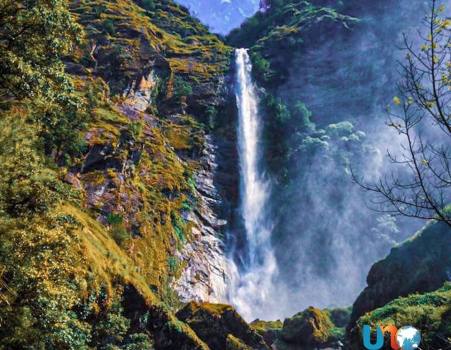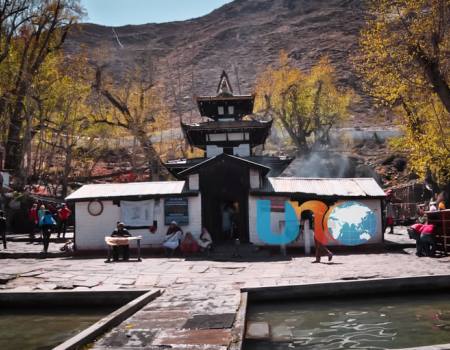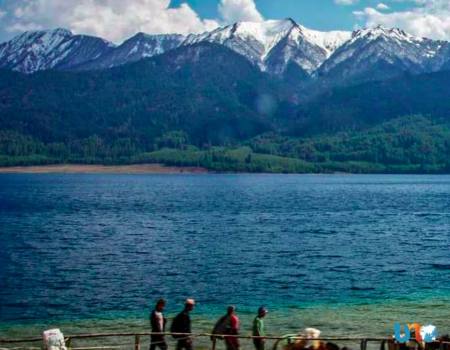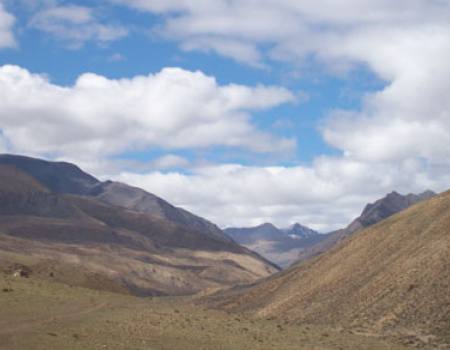A Journey to the Roof of Africa: Kilimanjaro
Embark on a thrilling Kilimanjaro trek, a popular and awe-inspiring adventure in Tanzania. Climbing Kilimanjaro, the highest peak in Africa, is an extraordinary mountaineering expedition that offers breathtaking views and a diverse range of climatic zones. This African mountain climbing experience takes you through stunning landscapes, including rainforests, heath, alpine desert, and the arctic zone near the Kilimanjaro summit, also known as Uhuru Peak.
Kilimanjaro, often referred to as the "Roof of Africa," stands tall at an elevation of 5,895 meters (19,341 feet) above sea level. Its towering presence and natural beauty make it a dream destination for adventurers and mountaineers from all over the world. With several routes to choose from, such as the Machame route, Lemosho route, Marangu route, and Rongai route, there are options suited to different preferences and fitness levels.
The Machame route is known for its scenic beauty and provides climbers with an excellent chance of acclimatization. As you trek through the rainforest, you'll witness the lush vegetation and encounter unique wildlife, including monkeys and colorful bird species. The route then takes you through the heath and alpine desert zones, offering stunning views of the surrounding landscapes.
The Lemosho route, on the other hand, is a longer and more gradual ascent, allowing for better acclimatization. This route offers breathtaking scenery and a sense of wilderness, as it approaches Kilimanjaro from the west. As you traverse the various ecological zones, you'll witness the diverse flora and fauna that call this region home.
For those seeking a slightly more comfortable climb, the Marangu route, often referred to as the "Coca-Cola route," provides huts for accommodation along the way. While this route is popular, it's important to note that the accommodation is basic and climbers still need to be prepared for the physical challenges of the climb.
The Rongai route is a less crowded option, starting from the northern side of Kilimanjaro. This route offers a unique perspective, as it approaches the mountain from a remote and less explored area. It provides a sense of solitude and tranquility, allowing climbers to immerse themselves in the natural beauty of the surroundings.
Whichever route you choose, reaching the Kilimanjaro summit, Uhuru Peak, is an incredible achievement. Standing atop the highest point in Africa, you'll be rewarded with awe-inspiring panoramic views of the surrounding plains, forests, and mountains. The sight of the glaciers and volcanic formations adds to the sense of wonder and adventure.
It's important to note that climbing Kilimanjaro requires proper preparation and acclimatization. Altitude sickness can be a risk, and climbers should allow for sufficient time to adapt to the changing conditions. It's highly recommended to join an organized trek with experienced guides who can provide support, knowledge, and ensure your safety throughout the journey.
A Kilimanjaro trek is not just about the physical challenge; it's also a cultural experience. Tanzania, with its rich cultural heritage, offers a chance to explore local villages and interact with the friendly Chagga people who inhabit the foothills of the mountain. This adds a unique dimension to your adventure, allowing you to appreciate the local traditions, customs, and way of life.
The peak was first climbed by Hans Meyer and Ludwig Purtscheller. It is also listed in the Seven Summit peaks of each of the seven continents.
Climbing Mount Kilimanjaro is an unforgettable experience that combines natural beauty, physical challenge, and cultural immersion. It attracts adventurers seeking to test their limits and immerse themselves in the awe-inspiring landscapes of Africa's highest peak.
In conclusion, a Kilimanjaro expedition is an incredible adventure that combines the thrill of mountaineering with breathtaking natural beauty. With its diverse climatic zones, stunning scenery, and the sense of personal achievement that comes with reaching the summit, Kilimanjaro offers a once-in-a-lifetime experience. So, lace up your hiking boots, prepare for the challenge, and embark on a Tanzania.
Trip Highlights
- Trekking Destination: Kilimanjaro Trekking
- Group Size: Min. 1 & Max any
- Minimum altitude: 1,000m
- Maximum altitude: 5,895m
- Grade: Moderate and Fairly Strenuous
- Accommodation: Hotel
- Total Duration: 6 Days
- Best Time to Climb: All year around
Details:
Kilimanjaro, located in Tanzania, is the highest peak in Africa and one of the most popular destinations for mountaineers and adventurers. Here are some of the highlights of Kilimanjaro:
-
Highest Peak in Africa: Kilimanjaro's summit, called Uhuru Peak, stands at an impressive elevation of 5,895 meters (19,341 feet) above sea level. It is the tallest mountain in Africa and one of the "Seven Summits," the highest peaks on each continent.
-
Diverse Climatic Zones: Kilimanjaro is known for its unique climatic zones, which change dramatically as you ascend. The mountain features several ecological zones, including cultivated farmland, rainforest, heath, alpine desert, and finally, the arctic zone near the summit. This diversity of landscapes makes the climb a truly remarkable experience.
-
Stunning Scenery: The journey to the summit of Kilimanjaro offers breathtaking views. As you ascend, you'll witness panoramic vistas of the surrounding plains, forests, and mountains. The sight of the glaciers and the volcanic formations is particularly awe-inspiring.
-
Mountaineering Accessibility: Kilimanjaro is considered a non-technical climb, which means that it doesn't require specialized mountaineering skills or equipment like ropes and ice axes. This accessibility makes it appealing to a wide range of climbers, from experienced mountaineers to adventurous beginners.
-
Cultural Experience: Kilimanjaro is located in Tanzania, a country with a rich cultural heritage. Many climbers choose routes that pass through local villages, allowing them to experience the traditional culture and interact with the friendly Chagga people who inhabit the foothills of the mountain.
-
Biodiversity: Kilimanjaro is home to a variety of flora and fauna. The lower slopes are covered in lush rainforest, hosting a range of wildlife, including monkeys, elephants, and a wide array of bird species. As you ascend, the vegetation becomes sparser, but you may still encounter unique plant species adapted to the harsh alpine environment.
-
Trekking Routes: Kilimanjaro offers several trekking routes, each with its own unique features and challenges. Popular routes include the Machame Route, Lemosho Route, Marangu Route, Rongai Route, and the lesser-known Shira Route. These routes vary in terms of duration, difficulty, and scenery, providing options for trekkers of different experience levels.
-
Conservation and Protection: The Kilimanjaro National Park is dedicated to preserving the mountain's unique ecosystems and biodiversity. Efforts are in place to promote sustainable trekking practices and minimize environmental impact.
-
Personal Achievement: Climbing Kilimanjaro is a significant personal achievement for many people. Reaching the summit requires determination, physical fitness, and mental endurance. The feeling of standing on the rooftop of Africa and conquering the challenge is incredibly rewarding.
It's important to note that climbing Kilimanjaro can be physically demanding and altitude sickness is a potential risk. Proper preparation, acclimatization, and assistance from experienced guides are crucial for a safe and successful climb.
Outline Itinerary
- Day 01:Arrive in Tanzania.
- Day 02:Arusha (1,400 m) – Marangu gate at (1,980 m) – Mandara Hut (2,700 m)
- Day 03:Mandara Hut (2,700 m) – Horombo Hut (3,720 m)
- Day 04:Horombo Hut (3,720 m) – Kibo Hut (4,700 m)
- Day 05:Summit attempt: Kibo Hut (4,700 m) – Uhuru peak 5,895 m & back to Horombo Hut (3,720 m)
- Day 06:Horombo Hut (3,720 M) – Marangu gate at 1,980 m – Drive Back to Arusha
Detail Itinerary
- Day 1Arrive in Tanzania.Meet and transfer from the point of arrival at Kilimanjaro/Arusha airport to the Mvuli
Hotel in Arusha or similar in Moshi. Briefing and gear checking before dinner &
overnight.
• Meals Plan: Breakfast Included
• Overnight at Mvuli Hotel in Arusha - Day 2Arusha (1,400 m) – Marangu gate at (1,980 m) – Mandara Hut (2,700 m)Walking approx. 12 km in 5 hours over the montane forest and low alpine zone
(moorland).
After breakfast at your lodge in Arusha, we will pick you up and drive to Marangu
gate via Moshi town & along villages, local farms of cassava, potatoes, maize,
coffee & banana plantation. On arrival at the gate, you will sign in at the park office
and your guide will work on other Park formalities. The actual number of potters
who will accompany you will depend on things to be carried and each potter
normally carries not more than 20 kg, you will carry your lunch box, drinking water,
clothes, and other personal stuff. Potters are hiking first so once they carry any of
your things you will meet them at the camp.
Today, your Mt Kilimanjaro Climbing Marangu route 5 days start by hiking up to
Mandara hut at (2700 m) your hiking will be through the beautiful landscape of the
mountain forest, little streams, and waterfalls Kisamboni picnic area is the place for
lunch can be reached after 1.5 hours of walking from the park gate. From
Kisamboni you will possibly need 1.5 hours to reach Mandara hut (2,700 m).
The vegetation type at this campsite is of low alpine zone and moorland, accompanied
with shrubs and trees with lots of lichens.
Mandara area is located in a clear forest with wooden A-shaped framed huts and
here is where you will spend your first night in Kilimanjaro Mountain. Mandara
huts can accommodate 60 people sleeping in bunks; each hut has 6-8 sleeping
bunks. The water around this area is from the spring and can be used for drinking,
cooking, and flushing toilets.
You can have a short walk to the Maundi crater where you can enjoy good
weather and possibly see Mawenzi Peak. Blue Monkeys, black and white colobus
Monkeys can be spotted around this place.
Each day when arriving at the huts you will have tea/coffee & some bites then hot
water to wash before changing the clothes you have been hiking with. On the mountain, we
say to stay warm all the time. Dinner will be served before going to bed.
• Meals Plan: Breakfast, Lunch & Dinner Included
• Overnight at Mandara Hut (2700 m) - Day 3Mandara Hut (2,700 m) – Horombo Hut (3,720 m)Walking approx. 15 km. hiking hours 6 (moorland zone).
After a light breakfast, your second hiking day on the Kilimanjaro Marangu route starts,
this day you will hike along the last patches of the forest past the other side of
Maundi crater and soon you will reach the moorland vegetation zone.
This area is dominated by heather, Lobelia Deckenii, and lovely Dendrosenecio
Kilimanjaro. With good weather conditions, you can have a great view of both Kibo
and Mawenzi. Reach Horombo huts and if you wish you can bath with hot water
before dinner and sleep in a luxurious bed.
Horombo huts have a capacity of 120 people all sleeping in beds it is a small
village and the only hut in Kilimanjaro with beds. At this camp nights tends to be
very cold please be prepared. Arriving at the camp same procedures will follow
just as much as the previous day.
• Meals Plan: Breakfast, Lunch & Dinner Included
• Overnight at Horombo Hut (3,720 m)
- Day 4Horombo Hut (3,720 m) – Kibo Hut (4,700 m)Walking approx. 15 km. in 6 hours (Alpine desert).
Your Hiking day will start after breakfast. Saddle the area in-between Mawenzi
and Kibo can be reached in two different routes, through the upper route which is
eroded and stormy or by taking the lower route which is easier and most
recommended where you can pass near the water point at (4,200 m) which is the
last in this route.
Fill your bottles with enough drinking water as this will be the last water point
before reaching Horombo huts again, otherwise, you can buy mineral water or soft
drinks at Kibo huts. If you wish you can take a short break at this Last water point
and perhaps sit at the picnic site for lunch.
You will reach Kibo huts at (4700 m) after 2 walking hours. Kibo hut is in the
barren Alpine desert with only grasses and everlasting flowers. Kibo huts are built
with stone blocks and have 60 bunk beds and platform toilets. Arriving at the camp
same procedures will follow as the previous day.
• Meals Plan: Breakfast, Lunch & Dinner Included
• Overnight at Kibo Hut (4700 m) - Day 5Summit attempt: Kibo Hut (4,700 m) – Uhuru peak 5,895 m & back to Horombo Hut (3,720 m)Walking approx. 6 km ascent and 21 km descent for in 8 hrs. On rocky, ice-capped summit.
The final part of your Mt Kilimanjaro climbing Marangu route for 5 days will be at
night. After dinner, your guide will give you a detailed briefing on how it will be, so
you will prepare all needed equipment before going to sleep as the trekking will
start around midnight time will depend on your pace. Things to be prepared for
this attempt are thermal clothing, a ski stick, and thermal flask for water, hand
warmers, batteries, and a headlamp among others. (We will brief you here in Arusha
& go through your Gears).
Depending on your pace you can possibly wake up at 23:00 or 23:30 and have
some tea and biscuits before starting. You will face a challenging part of your Mt
Kilimanjaro climbing at the beginning which is a rough and rocky path.
On the way you will pass Williams Point at (5,000 m), Hans Meyer Cave at (5,150
m) and Gillman’s point at (5,681 m) positioned on the crater rim. To reach Hans
Meyer Cave from Kibo hut you will spend almost two and a half hours. Gilman’s
Point is placed just a short distance from Hans Meyer Cave, it is about an hour to
get there.
From Gilman’s point, you will possibly need not less than 1 hour and a half to
reach the summit. The rest of your climbing all the way up to Uhuru Peak will be
covered with snow and the walking will be along the crater rim. Stella point at
(5,752 m) will be passed on the way and this is the point where other Kilimanjaro
routes reach the rim.
Marangu route 5 days tours continue and at this point you're about to reach the
summit but it can be of a great challenge. Woow! You have reached the Uhuru Peak
the highest point in Africa, Kilimanjaro Mountain, (Congratulation!)
Spend some minutes at the summit taking pictures but not much longer at this
altitude before starting your way down and back to Kibo hut at (4,700 m) where
lunch will be served, proceed further down to Horombo hut at (3720 m), you will
need almost 3 hours. Reaching the Camp same procedures will follow washing,
coffee/tea, etc. Dinner will be served there and you will spend a night at the
luxurious beds.
• Meals Plan: Breakfast, Lunch & Dinner Included
• Overnight at Horombo Hut (3,720 m)
- Day 6Horombo Hut (3,720 M) – Marangu gate at 1,980 m – Drive Back to ArushaWalking approx. 27 km for 6 hrs across the low alpine zone, moorland, and montane
forest.
Breakfast at Horombo hut before starting your last day downwards from
Kilimanjaro. Have lunch and some rest at Mandara hut (2700) on your way down, hopeful the
path is familiar as you have passed here on your first day.
Reaching Marangu gate, you will provide some details to the register and you will
be given a summit certificate, if reached Gilmann’s Point you will have a green
certificate & for Uhuru Peak the actual Summit is a gold certificate. Tips for
potters and guides are recommended & this can be done at Horombo gate in the
morning when celebrating before descending to Marangu Hut. Meet your driver at the gate who will transfer you back to Arusha/Moshi overnight or drop you off at the airport (Accommodation in Arusha/Moshi can be arranged upon request at extra cost).
• Meals Plan: Breakfast & Lunch Included.
Congratulation you are among the heroes who have successfully Climbing Mt
Kilimanjaro Marangu route in 5 days! Mt Kilimanjaro climbing Marangu route 5 days can be extended to more days on Kilimanjaro and can as well combined with our short Tanzania safari package or
Zanzibar beach vacation or both. Let us know your wishes. Karibu Sana!
What's Includes:
- All transfers
- 2 Night accommodation at Mvuli Hotel in Arusha on B/B
- Return transfer Arusha Marangu
- Overnight stays in mountain Huts
- Professional & well experienced Mountain guides, chefs & porters
- All entry fees & hut fees • Rescue fees • All meals while on the Mountain
- Guides, Porters & chef salaries, and entry fees
- Quality Mess tents with tables and chairs
- Large portions of fresh, healthy nutritious food
- Clean, purified drinking water
- Crisis management and safety procedures
- Fair and ethical treatment of porters
- Government value-added tax VAT
What's Excludes:
- Sleeping bag, please bring your own sleeping bag but you can still rent it in Arusha town at a reasonable price paid once for the whole trip
- Flight tickets
- Accommodation in Arusha on the last day.
- Tanzania Visa.
- Gratuity/ Tips for Kilimanjaro climbing Crew.
- All items of a personal nature (e.g., laundry, telephone, beverages, etc.)
- Meals not listed above.
Trip Note
Mount Kilimanjaro Expedition is about safety and the well-being of our groups. All of our trips are led by qualified professional guides who are well-trained by Nepal Government. Our responsibility is to ensure your comfort and safety as we take your holiday. In this regard, we work honestly and effectively to provide you with the Himalayan experience that suits your interest. We encourage you to question us freely and contribute in the planning stages of your adventure in the trekking period
Quick Inquiry
Trip Facts
- Transportation:6
- Meals:Breakfast + Lunch + Dinner
- Accommodation:Lodge + Camping
- Altitude:5,895 m



